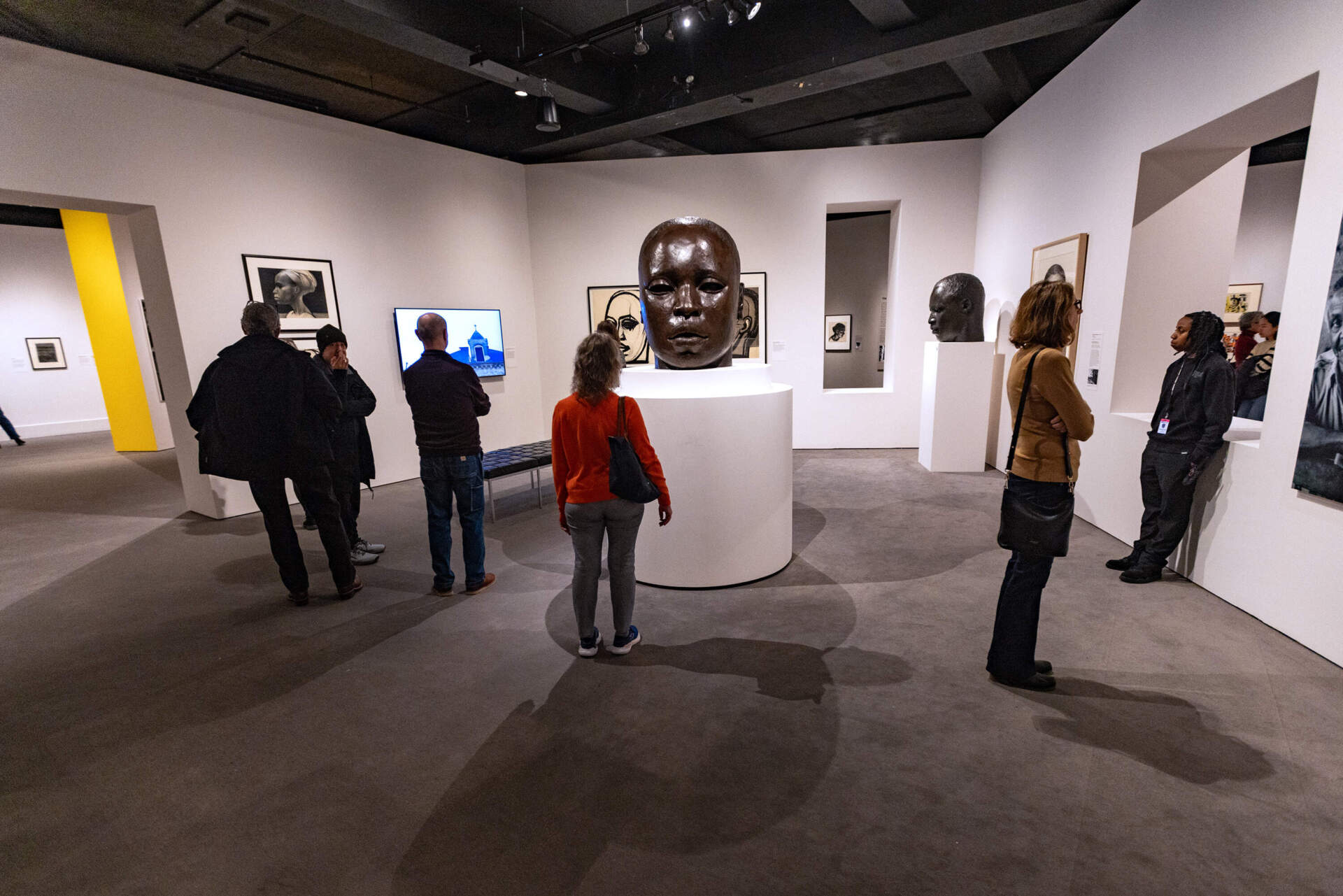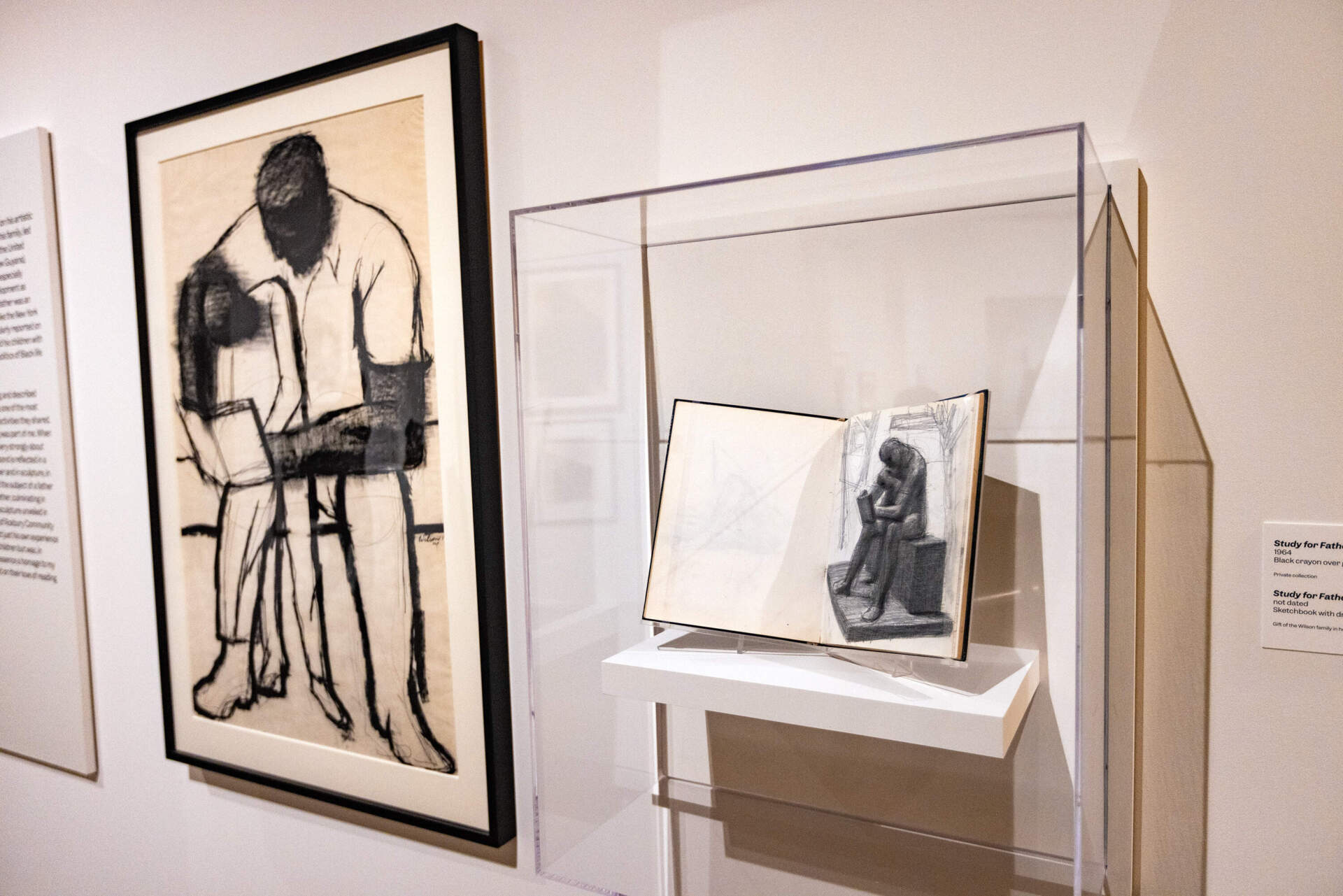Roxbury artist John Wilson spent his decades-long profession creating drawings, work and sculptures that explored what it meant to be human. Born in 1922 to Guyanese immigrants, his work was deeply knowledgeable by his expertise being a Black man in twentieth-century America.
Greater than 100 of his works are the topic of “Witnessing Humanity: The Artwork of John Wilson,” a brand new exhibition on view via June 22 on the Museum of Effective Arts. “Wilson described what he needed to realize in his work was to create what he referred to as ‘highly effective pictures’ that may power others to see what he noticed,” mentioned Edward Saywell, one of many curators of the exhibit. “He needed to power others to expertise what he was experiencing rising up in Roxbury.”

Wilson wrote in notes for a lecture at Tufts College that he was usually uncovered to pictures that depicted Black individuals “as dehumanized caricatures.” A graduate of the College of the Museum of Effective Arts and a world traveler, Wilson was additionally keenly conscious of the absence of Black artists and Black our bodies as autonomous topics in main museums.
“Many artists of that era have been being swayed in direction of the dominance of abstraction,” mentioned Edmund Barry Gaither, the chief director and curator at Nationwide Heart of Afro-American Artists in Roxbury. Gaither met Wilson in 1969 and remained shut with him for many years. “There have been many individuals in that point who felt that using figurative subject material was quaint. However John remained dedicated to the determine because the picture on the heart of his work.”
That is evident within the portraits of Wilson’s spouse, his youngsters and household associates on show in “Witnessing Humanity.” Some are performed in charcoal and others are rendered in vivid colours. “You see in these portraits a specific particular person and place and time,” Gaither identified. “However once you step again and have a look at it, you additionally see a universe of individuals.”
By recreating the scenes and other people he knew, Wilson was in a position to join the private to a world dialog about race, identification and belonging, mentioned Leslie Hammond King, one other curator of “Witnessing Humanity.” “He was so acutely sensitized to what’s mandatory to inform a narrative visually that may deliver individuals to the understanding of why portraiture is so vital.”

Wilson prolonged this concept of utilizing the determine to develop notions of humanity via his illustrations for kids’s books. A show of books options totally different titles like “Striped Ice Cream,” “Malcolm X” and “Road Kids” that helped present optimistic representations of Blackness to youngsters. One e book, “Becky,” was written by Wilson’s spouse, Julia. It depicts a little bit Black lady trying to find a birthday reward together with her mom. She finds a doll that appears identical to her and the doll finally involves life.
Boston locals, like artist Ekua Holmes, have been invited by the curators of the exhibit to contribute their private experiences studying youngsters’s books that featured Wilson’s illustrations. Among the quotes from these private experiences are displayed with the books. “ Within the U.S., books are being banned in libraries and colleges,” mentioned Saywell. “What Ekua speaks so powerfully to is how vital and demanding a majority of these pictures have been for her rising up.”
Wilson was usually not overtly political in his work however he didn’t should be. “I do not sit down and suppose ‘Effectively, I’ve to do an image on Black individuals right now,'” Wilson mentioned in a 1995 interview with the Boston Globe. “What I am doing… is exercising a few of these conflicting sorts of messages that this racist world has given me.” His depictions of the realities of being marginalized in a place like the USA and his dedication to offering figurative examples of Black life have been as vital because the colourful, daring and closely political works of different Black artists of his time.
“ How will we see magnificence? How will we interpret magnificence?” asks Hammond. “What does magnificence imply to us when [Black people] are so disparagingly portrayed within the media in probably the most unconscionable, poisonous methods? The battle has been to consistently discover methods to retrieve humanity.”
Hammond mentioned that the “retrieval” of humanity is as vital because the “witnessing” that’s included within the exhibition’s identify. Wilson did extra than simply see the individuals round him for who they have been; he was intentional about reclaiming that illustration via his work in order that others on the earth may see that humanity too.

“ You hope that as individuals stroll round ‘Witnessing Humanity,’ that a number of the works actually contact them,” mentioned Hammond. “That they’ve an emotional response, that means that they’ll see themselves or their youngsters or their relationships in what he was making an attempt to do.”
On the finish of the exhibit, there’s a maquette of “Everlasting Presence,” a sculpture that Wilson conceived within the Seventies. The complete-size model was put in in 1987 on the garden of the Nationwide Heart for Afro-American Artists and has since change into an vital landmark within the native neighborhood. It is unattainable to find out the gender of the face depicted within the sculpture, neither is there any indicator of whether or not it represents the previous, current or future.
It was created to be a “imaginative and prescient of shared humanity,” mentioned Gaither. “ The everlasting isn’t lacking from our idea of ourselves and the way we go ahead. Wilson particularly desires that for his neighbors, associates and the Black group however he additionally desires it for the universe.”
Close to the maquette, a video highlights members of the Roxbury group who share their private connections to the sculpture. Some locals acknowledge that they didn’t really know the piece’s official identify and sometimes simply name it “the large head.” It is so extensively often known as “the large head” that the NCAAA has affectionately been dubbed “the large head museum.” Based on Hammond, realizing the precise identify of the piece doesn’t actually matter.
“‘Everlasting Presence’ is a actuality, however ‘huge head’ is the guts of the group,” she mentioned. “That is one thing that each artist longs for. If you understand it, you adore it, and also you’re ready to maintain it, then the message has been obtained.”
“Witnessing Humanity” is a crucial second in celebrating the life and work of John Wilson however Gaither factors out Wilson has at all times “loomed giant” in Roxbury. Via “the large head,” Wilson’s work grew to become an indelible a part of the group panorama. That is very important in a spot like Roxbury, which is quickly altering on account of gentrification and displacement. “Large head” silently observes the realm, an omnipresent and fixed reminder of the individuals, like Wilson, who name the realm dwelling.
“ Lay palms on ‘huge head’ and really feel the synergy that has been imbued into that huge bronze sculpture,” mentioned Hammond. ”Know that ‘huge head’ is a guardian, an ancestor, a warrior spirit. And know that it is a sacred area.”
“Witnessing Humanity: The Artwork of John Wilson” is on show on the Museum of Effective Arts, Boston via June 22.

